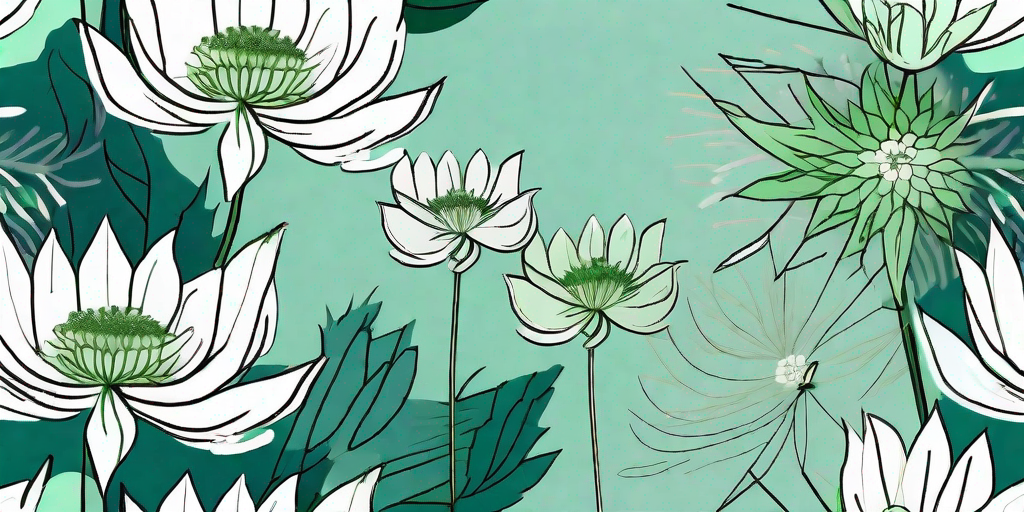
If you're a garden enthusiast or even a novice looking to add a touch of magic to your green space, then you're in for a treat. Today, we're going to explore the hidden beauty of Astrantia, a floral gem that's worth every inch of your garden. This perennial plant, with its star-shaped flowers and intricate details, is a true spectacle to behold. But don't just take our word for it, let's dive in and explore this horticultural wonder.
Unveiling the Astrantia: A Brief Introduction
Before we delve into the nitty-gritty of planting and caring for Astrantia, let's get to know our star (pun intended) a little better. Astrantia, also known as Masterwort, is a genus of herbaceous plants in the family Apiaceae, native to Central, Eastern and Southern Europe. The name 'Astrantia' comes from the Latin 'astra', meaning star, a fitting name for a flower that shines so brightly in any garden.
These perennials are known for their charming, star-shaped flowers that come in a variety of colors, from pure white to deep red. The flowers are surrounded by an elegant collar of bracts, adding to their unique appeal. They bloom from late spring to early fall, providing a long-lasting display of beauty in your garden.
The Art of Growing Astrantia
Now that we're acquainted with our floral protagonist, let's get down to business. Growing Astrantia is a rewarding experience, and with the right care, these plants can thrive in your garden.
First things first, Astrantia prefers a spot in partial shade but can tolerate full sun if the soil is consistently moist. They prefer rich, well-drained soil with a good amount of organic matter. So, if your soil is on the sandy side, you might want to add some compost or well-rotted manure to give your Astrantia a nutrient boost.
Planting Astrantia
When it comes to planting Astrantia, timing and technique are key. The best time to plant is in the spring or fall when the weather is cooler. To plant, dig a hole twice as wide and as deep as the root ball. Place the plant in the hole, making sure the top of the root ball is level with the soil surface. Backfill with soil, firm it gently, and water thoroughly.
Remember, Astrantia plants like company. Plant them in groups of three or more for a more impactful display. They also make great companions for other shade-loving plants like hostas and ferns.
Caring for Astrantia
Caring for Astrantia is relatively straightforward. These plants are low-maintenance and don't require much fuss. However, they do appreciate a little TLC. Regular watering is essential, especially during dry spells. A layer of mulch around the base of the plant can help retain moisture and keep the roots cool.
As for feeding, a top-dressing of compost or well-rotted manure in the spring should suffice. Pruning is not necessary, but deadheading spent flowers can encourage a second bloom.
Why Astrantia Deserves a Spot in Your Garden
By now, you're probably wondering why you should choose Astrantia over other garden plants. Well, apart from their undeniable beauty, there are several reasons why these floral gems deserve a spot in your garden.
Firstly, Astrantia is a pollinator magnet. Their nectar-rich flowers attract bees, butterflies, and other beneficial insects, promoting biodiversity in your garden. Secondly, they are deer and rabbit resistant, making them a great choice for gardens with wildlife visitors. Lastly, Astrantia is a versatile plant. Whether you want to create a cottage garden look, a woodland garden, or even a modern, minimalist garden, Astrantia can fit right in.
Frequently Asked Questions about Astrantia
- Is Astrantia easy to grow?
Yes, Astrantia is relatively easy to grow. They are low-maintenance plants that can thrive with minimal care.
- Can Astrantia grow in full sun?
Astrantia can tolerate full sun if the soil is consistently moist. However, they prefer a spot in partial shade.
- How often should I water Astrantia?
Water Astrantia regularly, especially during dry spells. The soil should be kept consistently moist.
- Are Astrantia plants deer resistant?
Yes, Astrantia plants are deer and rabbit resistant, making them a great choice for gardens with wildlife visitors.
Conclusion
There you have it, a comprehensive guide to the hidden beauty of Astrantia. This floral gem is not just a pretty face. It's a hardy, versatile plant that can bring a touch of magic to your garden. So why not give Astrantia a chance? Your garden (and the pollinators) will thank you.
Remember, the best garden is a garden that brings you joy. So go ahead, experiment, make mistakes, learn, and most importantly, have fun. After all, gardening is not just about the destination, it's about the journey. Happy gardening!















